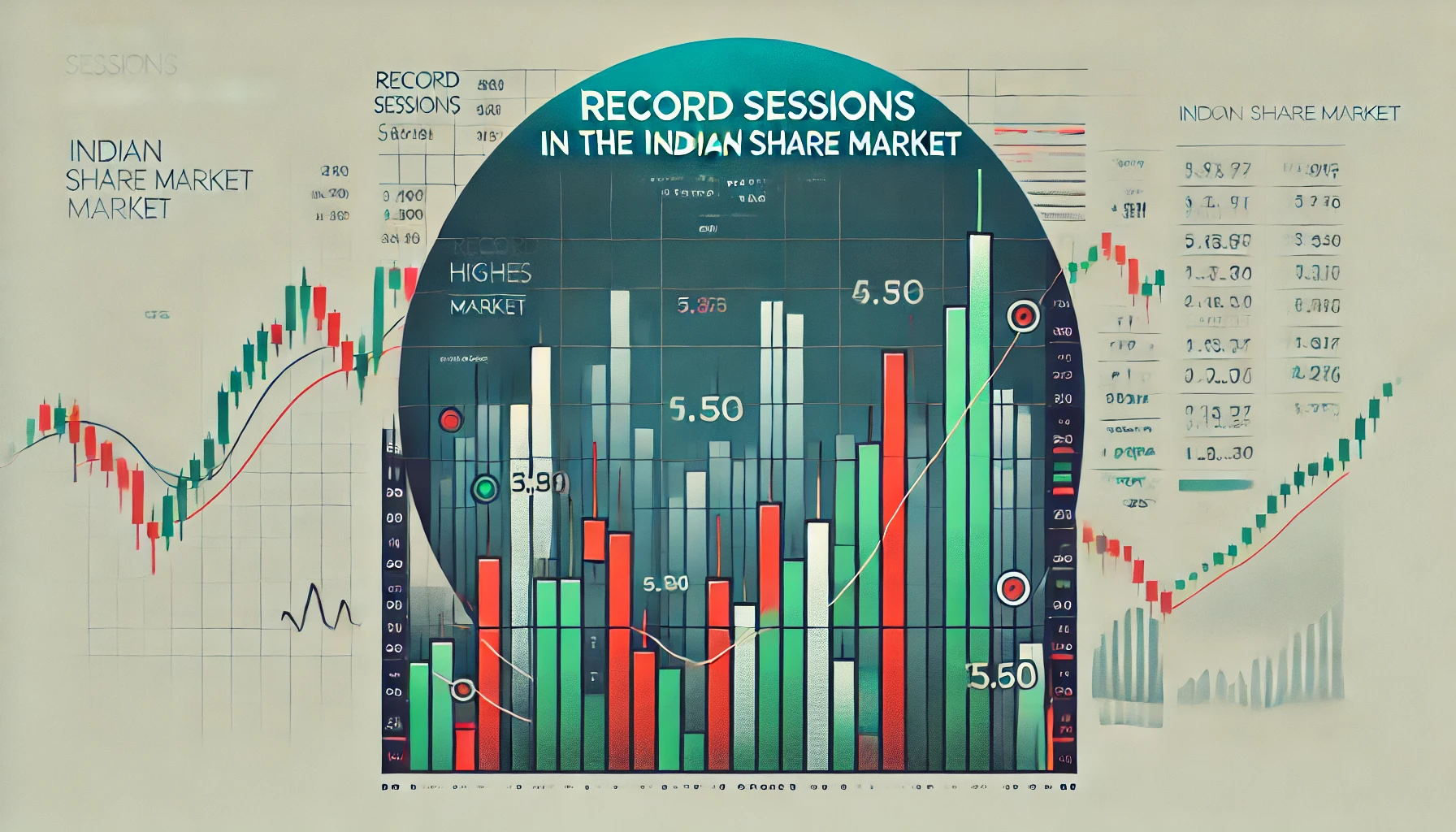The Indian stock market is one of the most dynamic and exciting markets for traders and investors. Among various technical analysis tools, Bollinger Bands stand out for their simplicity and effectiveness in analyzing market volatility and trends. In this blog, we will explore Bollinger Bands in depth, discuss how they work, and analyze how traders can apply them to the Indian market for better trading decisions.
What are Bollinger Bands?
Bollinger Bands, developed by John Bollinger in the 1980s, are a popular tool used in technical analysis to measure market volatility. They consist of three lines: a simple moving average (SMA) in the middle and two standard deviations plotted above and below the SMA. These two lines form the “bands” that expand and contract based on market volatility.
The concept behind Bollinger Bands is simple:
- Upper Band: Represents two standard deviations above the 20-day SMA.
- Lower Band: Represents two standard deviations below the 20-day SMA.
- Middle Band: The 20-day simple moving average.
These bands help traders identify overbought or oversold conditions, as prices tend to move within the bands 95% of the time.
How Bollinger Bands Work in the Indian Share Market
Bollinger Bands are commonly used in the Indian stock market to gauge market trends, reversals, and volatility levels. When applied to the Nifty 50 or the Sensex, they help traders decide when to enter or exit trades.
Key Interpretations:
- Squeeze: When the bands come close together, it indicates low volatility and potential for a significant price move.
- Breakout: A breakout occurs when the price moves outside the bands, indicating strong momentum in the market.
- Reversal: If the price touches the upper or lower band, it may indicate an overbought or oversold market, respectively, which could lead to a reversal.
Using Bollinger Bands: Practical Examples from the Indian Market
Let’s look at some historical examples of how Bollinger Bands have been used in the Indian market.
Table: Nifty 50 and Bollinger Bands Analysis
| Date | Nifty 50 Value | Upper Band | Lower Band | Signal |
|---|---|---|---|---|
| 01-Jan-2022 | 17250 | 17550 | 16950 | Neutral |
| 15-Feb-2022 | 17500 | 18000 | 17000 | Breakout Up |
| 01-Apr-2022 | 16700 | 17050 | 16350 | Breakout Down |
| 01-Jun-2022 | 16000 | 16350 | 15650 | Squeeze |
| 15-Jul-2022 | 16500 | 16900 | 16100 | Reversal |
This table shows how Bollinger Bands could have been used to analyze the Nifty 50 at different points in time. Breakouts, reversals, and squeezes have provided valuable signals to traders during market volatility.
Historical Data Analysis: Sensex and Bollinger Bands
To illustrate further, we will review historical price movements using Bollinger Bands on the Sensex over several months:
Table: Sensex Bollinger Bands Application
| Month | Sensex Closing | Upper Band | Lower Band | Market Condition |
|---|---|---|---|---|
| January 2023 | 58,800 | 60,500 | 57,100 | Neutral |
| February 2023 | 59,200 | 61,000 | 57,400 | Overbought |
| March 2023 | 57,500 | 59,700 | 55,300 | Oversold |
| April 2023 | 59,300 | 60,800 | 57,800 | Breakout Up |
| May 2023 | 58,600 | 60,100 | 57,100 | Reversal |
Applying Bollinger Bands: Best Practices for Indian Traders
- Combining with RSI (Relative Strength Index): Many traders use Bollinger Bands in conjunction with the RSI to confirm potential buy or sell signals. When the price touches the upper band and the RSI is over 70, it may be an overbought condition, signaling a potential sell.
- Identifying Breakouts: When a breakout occurs, it is important to wait for confirmation. For example, if the price moves above the upper band, it does not necessarily mean a buy signal. Traders should wait to see if the trend continues.
- Squeeze Strategy: A squeeze indicates low volatility and signals an impending market move. In the Indian market, this strategy has proven effective for traders looking to capitalize on upcoming sharp price movements.
Chart: Nifty 50 and Bollinger Bands (2018–2023)
Using historical data from the Nifty 50 index between 2018 and 2023, we can see the periods of high volatility and low volatility indicated by the expansion and contraction of the Bollinger Bands.
| Date | Upper Band | Lower Band | Price Movement |
|---|---|---|---|
| 01-Jan-2018 | 11,000 | 10,000 | Upward Trend |
| 01-Jun-2018 | 11,300 | 10,200 | Consolidation |
| 01-Dec-2018 | 12,000 | 10,500 | Squeeze |
| 01-Mar-2020 | 11,500 | 9,800 | COVID-19 Crash |
| 01-Jul-2021 | 16,000 | 14,500 | Breakout Up |
Strategies for Using Bollinger Bands in Indian Markets
1. The Bollinger Band Bounce
This strategy focuses on the tendency of the price to revert to the mean (middle band). When prices hit the lower band, traders often buy, assuming the price will bounce back toward the middle. Similarly, when prices hit the upper band, traders sell, expecting a downward move.
2. The Bollinger Squeeze
This is one of the most useful strategies for Bollinger Bands in the Indian market. When the bands tighten, it indicates low volatility, and a sharp move may be expected. This often happens before earnings announcements or major economic news in India.
Limitations of Bollinger Bands in the Indian Share Market
While Bollinger Bands are a powerful tool, they are not without limitations. They should not be used in isolation. Combining them with other indicators like the RSI or MACD will provide better insights.
Conclusion: Bollinger Bands as a Key to Trading Success
Bollinger Bands remain an essential tool for Indian share market traders, providing insights into volatility, trends, and potential reversals. By using them effectively, traders can make better-informed decisions, leading to more successful trades.
Whether you’re trading in Nifty 50 or Sensex, Bollinger Bands can help you navigate the complexities of the Indian stock market. With historical data, strategies like the squeeze, and combining with other indicators, you can enhance your trading game.

What is the TRIN stock market indicator?
The TRIN (Trading Index), also referred to as the Arms Index, is a technical analysis …

Record Sessions
The Indian share market is a dynamic and volatile space where major highs and lows …

3 Line Strike
Candlestick patterns are a vital tool for traders in the stock market, offering insights into …

3 White Soldiers and 3 Black Crows
Candlestick patterns are a key element of technical analysis in stock trading, offering clear signals …

Gapping Doji
Candlestick patterns are a critical part of technical analysis in the stock market, providing traders …

3 Windows
Candlestick patterns are a vital part of technical analysis, offering traders and investors insights into …

2 Gapping Candles
In the fast-paced world of the Indian stock market, technical analysis plays a crucial role …

3 Inside Down and Up
Candlestick patterns are powerful tools in the world of technical analysis, offering traders insight into …

Bullish and Bearish Belt Hold
Technical analysis is an essential part of trading in the Indian share market. Candlestick patterns, …

Piercing and Dark Cloud Cover
In the ever-evolving Indian stock market, candlestick patterns are crucial for traders aiming to predict …

Double Doji
Candlestick patterns have long been a favored tool for technical traders to forecast market movements. …

Rising and Falling Windows
In the world of technical analysis, candlestick patterns are vital tools for traders to anticipate …

Tweezer Top and Bottom
In the fast-paced world of the Indian share market, traders use technical analysis tools to …

Morning Star and Evening Star
In the Indian share market, technical analysis is a valuable tool for traders aiming to …

Hammer and Hanging Man
The Indian stock market offers a wealth of opportunities for traders who understand technical analysis. …

Shooting Star and Inverted Hammer
The Indian stock market, with its dynamic nature, presents various opportunities for traders and investors. …

Last Engulfing
The Indian share market is filled with patterns that can help traders make informed decisions. …

Harami
In the world of stock market analysis, candlestick patterns offer valuable insights into price movements. …

Engulfing
The Indian share market is known for its volatility, and traders often rely on technical …

Marubozu
Candlestick patterns are powerful tools used by traders in the Indian share market to analyze …

Spinning Top
The Indian share market, like any other, experiences constant fluctuations due to a multitude of …

Doji
The Indian share market is dynamic, with investors using various tools to gauge stock performance. …

Double Top
In the world of technical analysis, chart patterns are valuable tools that help traders spot …

Tweezer
In the Indian share market, where volatility and price fluctuations are part of daily trading, …

Harami
In the world of technical analysis, candlestick patterns are powerful tools that help traders make …

Heiken-Ashi
Navigating the Indian share market can be challenging due to the inherent volatility and market …

Ichimoku
In the world of technical analysis, few indicators offer the comprehensive insights that the Ichimoku …

Value Charts
In the ever-changing landscape of the Indian share market, traders and investors need tools that …

Money Flow Index
In the Indian share market, identifying trends, understanding momentum, and assessing volume are critical components …

Aroon
In the fast-paced world of the Indian share market, identifying market trends and spotting reversals …

Gator Indicator
In the Indian share market, success is largely dependent on identifying the right trends and …



















